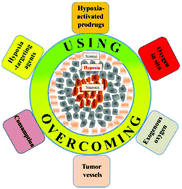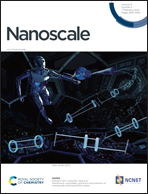Advanced nanotechnology for hypoxia-associated antitumor therapy
Abstract
Hypoxia is a hallmark of the tumor microenvironment, which promotes the proliferation, metastasis and invasion of tumors and stimulates the resistance of cancer treatments, leading to the serious consequence of tumor recurrence. Many nanotechnology-based studies have been conducted to improve the efficacy of cancer treatments using a hypoxia strategy. This is usually achieved by (i) activating bioreductive prodrugs in the tumor hypoxic/exacerbated hypoxic microenvironment, or (ii) delivering therapeutic agents to hypoxic tumor tissue using targeting molecules. Normally, a good therapeutic effect can be expected upon modulating the hypoxic microenvironment for tumor treatments. To achieve this, various nanotechnology strategies based on overcoming hypoxia have been exploited to alleviate tumor hypoxia and enhance the therapeutic efficacy of tumor therapy, including (i) reducing oxygen consumption by inhibiting cell respiration, (ii) normalizing tumor vessels to promote blood flow in the tumor, (iii) carrying exogenous oxygen into the tumor, and (iv) generating oxygen in situ. The strategy of in situ oxygen production is refined, and the scope of this strategy is further expanded. Finally, the inspiration of using advanced nanotechnology in hypoxia-associated antitumor therapy guides the study of tumor hypoxia for clinical use.

- This article is part of the themed collection: Recent Review Articles


 Please wait while we load your content...
Please wait while we load your content...